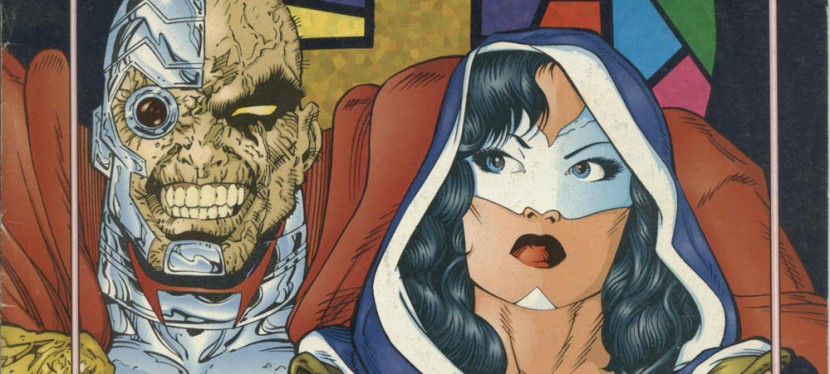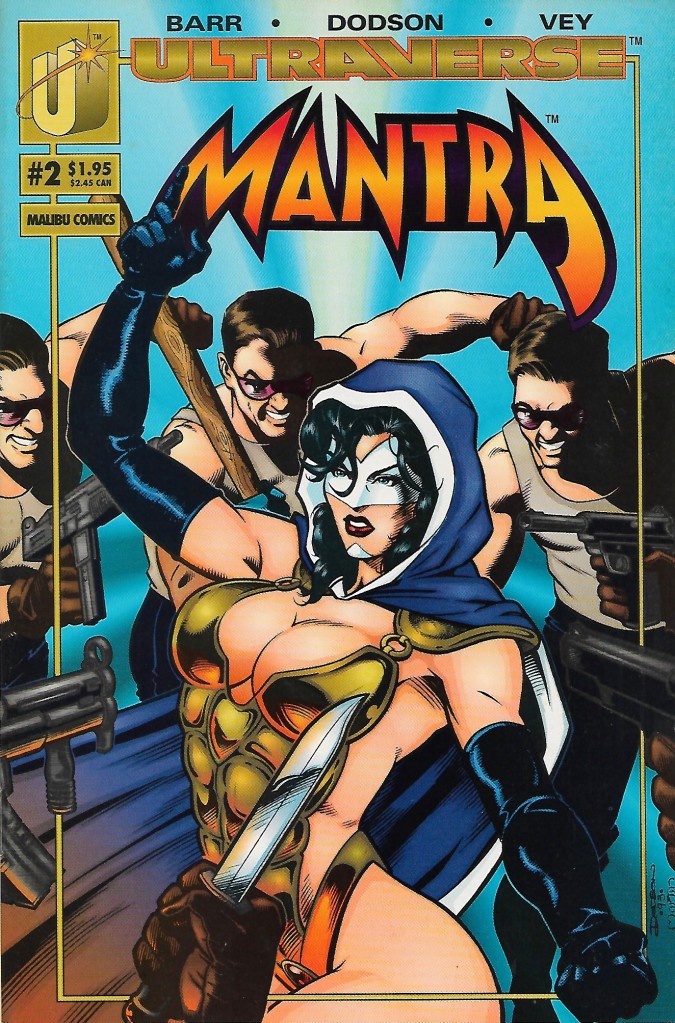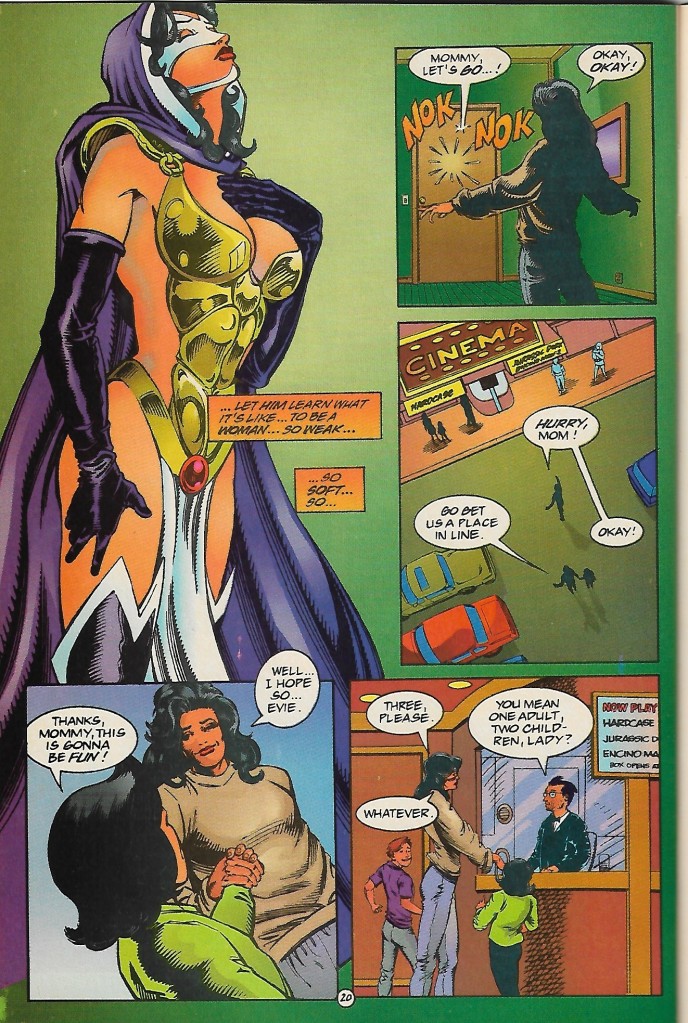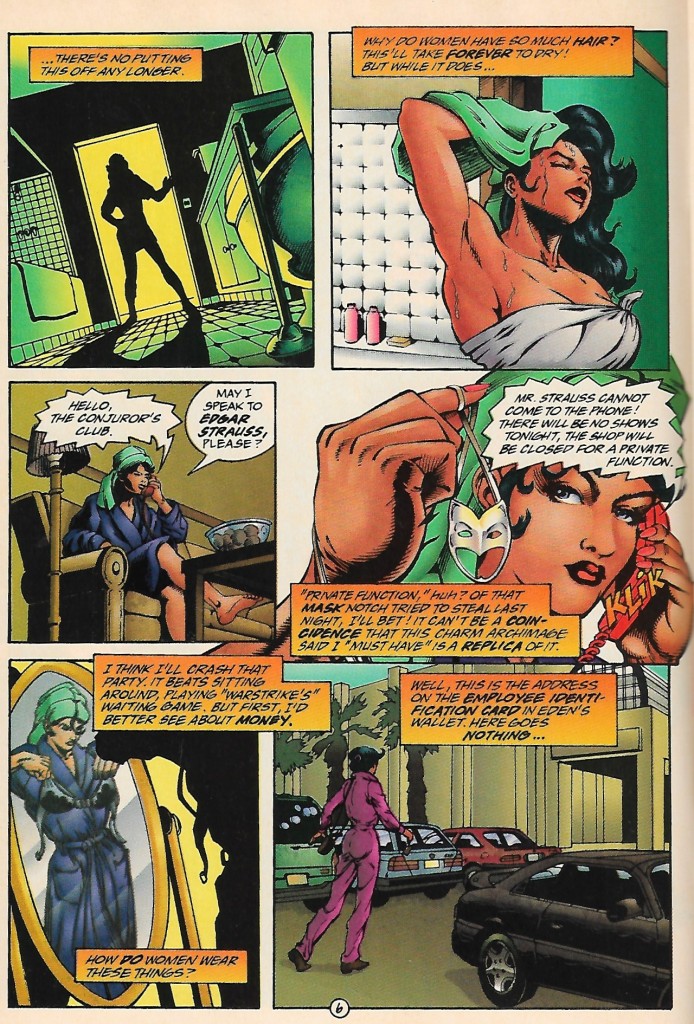Disclaimer: This is my original work with details sourced from reading the comic book and doing personal research. Anyone who wants to use this article, in part or in whole, needs to secure first my permission and agree to cite me as the source and author. Let it be known that any unauthorized use of this article will constrain the author to pursue the remedies under R.A. No. 8293, the Revised Penal Code, and/or all applicable legal actions under the laws of the Philippines.
Welcome back Ultraverse fans, geeks and fellow comic book collectors! If you want to discover more of the fantasy elements within the Ultraverse through Mantra – the pretty sorceress whose body is occupied by the soul of a male warrior named Lukasz – then you are in for something rather different.
To put things in perspective, the fantasy-swords-magic concept was made clear in Mantra #1 and that Lukasz and his band of warriors (led by an elder sorcerer) as well as their enemies (led by Boneyard) were definitely from another world. That other world will be explored at last in this look back at Mantra #4, published in 1993 by Malibu Comics with a story written by Mike W. Barr and drawn by Robb Phipps.

Early story
The story begins in the world of Boneyard, at his castle specifically. Down on her knees, Mantra is just in front of the villain Boneyard who says, “So this is Archimage’s last, best hope. Just a woman!!”
Boneyard tells Mantra not to rise nor move. As he does not yet know that Lukasz is inside Mantra’s body, Boneyard welcomes her and states that it is his right to choose any woman in his kingdom as his bride. In reaction to being selected as Boneyard’s newest mate with a purpose to potentially give birth to his children, Mantra strikes him with an energy blast symbolically rejecting him.
Boneyard then says, “Enough. I tolerate this dissent because your body carries much potential for magic, woman. It is only your body that saves you from death. Your bewildering loyalty to my defeated brother, Archimage, would ordinarily be enough to condemn you. Your genes, combined with mine will yield children to whom magic comes as easily as taking breath.”
As the villain talks, Mantra notices the sword pointed at her was the same one used to kill her when she was man (as Lukasz). She then makes moves to get Boneyard off-balanced and try to leave the castle…
Quality
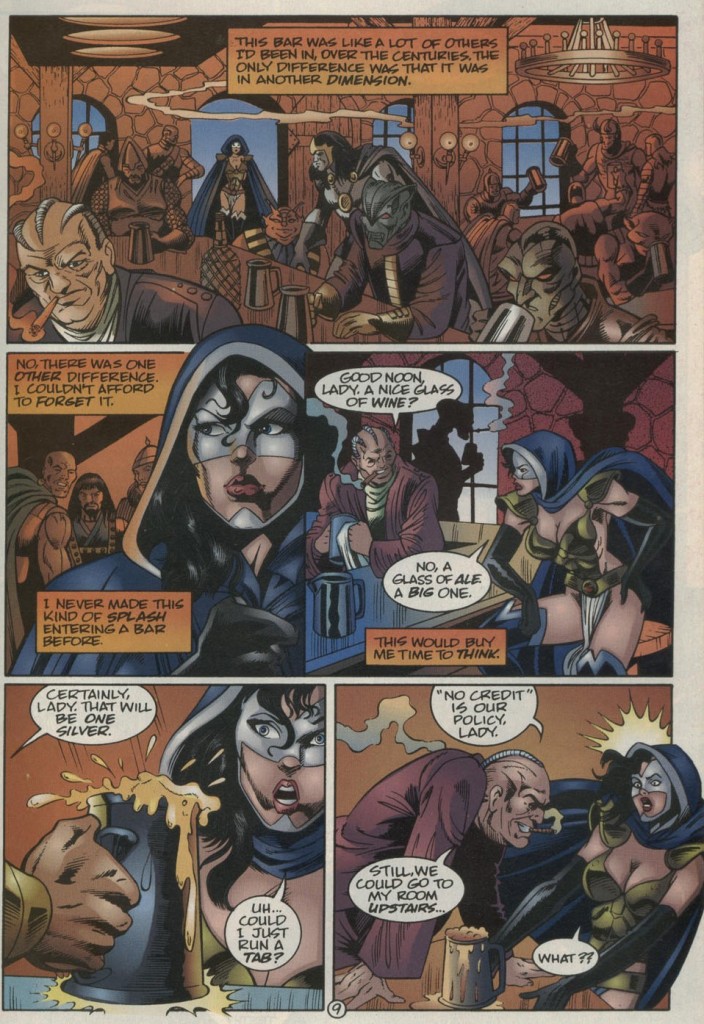
I’ll start with the writing. What Mike W. Barr did here successfully was raising the stakes for Mantra which involves the drastic change of location and setting from the modern society of Earth into the fantasy realm where Boneyard and his army are based in. The mentioned change literally opened new opportunities to develop Mantra’s personality while at the same time offered readers a lot of new things and places for their exploration.
With the all-new setting, lots of fantasy genre tropes are present. There is the ever-present tavern filled with lots of people that include humans and non-human beings that go beyond dwarves and elves. There is also the slave auction of both men and women standing almost nakedly in front of the bidders. There also were people wearing capes, hoods, swords, spears and armor which Mantra smoothly blends in with.
Along the way, there is a lot spectacle here mainly acts of magic alternated with hard action moves. The way the spectacle is presented fits in excellently with the fantasy setting and I should state that Robb Phipps did a very solid job visualizing such elements while succeeding in making Mantra, Boneyard, Archimage and Warstrike look recognizable.
Back to the writing, Mike W. Barr prepared a lot of details in the story that explained Boneyard’s nature and even his status as the husband of multiple wives. This comic book also reveals that Boneyard is likely bisexual since, apart from being married to multiple women, he kissed Mantra and lusts for her even AFTER he learned that Lukasz is occupying the woman’s body. His intention to marry Mantra symbolizes homosexuality as well. To put things in perspective, this makes Boneyard very guilty of sexual immorality on top of his wickedness. Refer to 1 Corinthians 6:9-10 (sexual immorality and homosexuality), Galatians 5:19-21 (sorcery and sexual immorality) and Deuteronomy 17:17 (polygamy) in the Holy Bible.
Conclusion

To say the least, Mantra #4 (1993) is entertaining enough mainly due to its fantasy setting and exposing key elements about the rivalry between Archimage and Boneyard. This was a daring and refreshing change of pace for Mantra series since the first three issues already emphasized Lukasz’s struggles on living in the body of Eden Blake (note: reincarnation is false and goes against the Holy Bible, read Hebrews 9:27 and Psalm 78:39 for insight) and living with her family as Eden’s soul was pushed into limbo. More notably, this issue shows more of how evil and wicked Boneyard is not simply because of his leading his army of evildoers but also because of his evil-filled nature. By comparison, Lukasz/Mantra is the lesser evil to Boneyard under the pretense of good-versus-evil in the story (which itself concluded in a predictable and underwhelming fashion).
If you are seriously planning to buy an existing hard copy of Mantra #4 (1993), be aware that as of this writing, MileHighComics.com shows that the near-mint copy of comic book costs $8.
Overall, Mantra #4 (1993) is satisfactory.
+++++
Thank you for reading. If you find this article engaging, please click the like button below and also please consider sharing this article to others. If you are looking for a copywriter to create content for your special project or business, check out my services and my portfolio. Feel free to contact me as well. Also please feel free to visit my Facebook page Author Carlo Carrasco and follow me at HavenorFantasy@twitter.com


